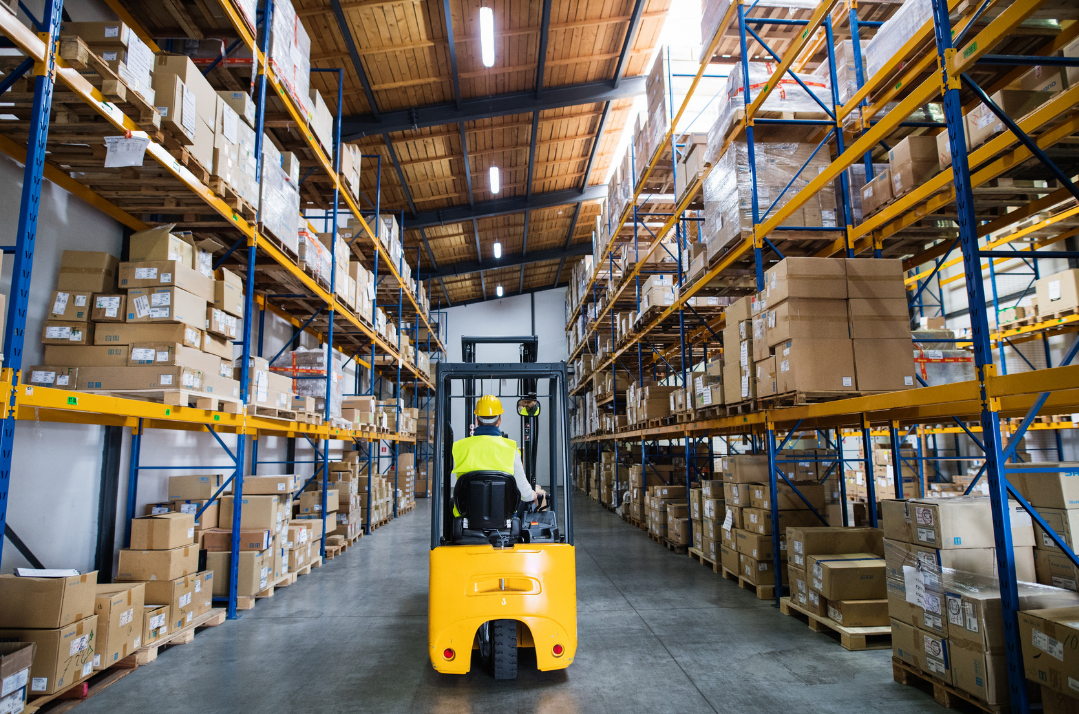Demands on manufacturing, distribution continue to grow in wake of the pandemic

24 Jun 2021
Advanced Manufacturing, News, economic development
The coronavirus pandemic disrupted businesses worldwide and its impacts on warehousing and distribution could have lasting effects. Outbreaks in one part of the world have caused transportation delays across the globe that have spiraled into supply chain disruptions and warehouse congestion or closures. Businesses are struggling to adapt. Some warehouses sat on standby waiting for product and laying off workers, while others have been left with excess inventory, limited storage capacity and the inability to ship product quickly enough.
These disruptions have stabilized as many businesses and warehouses have made short-term adjustments to serve current customer demand; however, reports suggest warehousing and distribution systems will need to change permanently to avoid manufacturing supply chain disruptions in the future.
Companies are now scrambling to expand warehousing capacity and bring manufacturing processes back onshore to serve the evolving demands in retail distribution.
Evolving demands in manufacturing, distribution
Space issues
Prior to the pandemic, employees in manufacturing plants were able to work in close quarters. Now, social distancing is the norm and manufacturing plants must make room for 6 feet of distance between workers. Designated sanitization areas and other precautions to avoid future spread of the virus may also require facility upgrades.
In addition to new requirements for space to ensure employee health and safety, many manufacturers have determined they must keep more products in stock to meet consumer demands in a timely fashion. Lean manufacturing practices were adopted by most companies to save on space and costs, but the pandemic has exposed a risk in operating too lean. To avoid future inventory shortages or delays, companies may elect to keep more inventory or finished goods in stock, requiring new square footage.
Smaller, decentralized warehouse numbers grow
With 325 million people and a GDP of $20 trillion, the United States offers one of the strongest markets in the world. Businesses worldwide are onshoring (or re-shoring) manufacturing operations to mitigate the risks of a vulnerable global supply chain, and those with manufacturing plants already in the United States are working to open more decentralized warehouses.
Warehouse locations closer to the consumer can reduce the risk of supply chain disruptions and cut down on transportation costs and delivery time. Decentralization will encourage manager and employee productivity, streamline communication and decision making and allow companies to take advantage of low labor costs in different locations.
This trend offers challenges and opportunities for economic development professionals and the communities they serve. The race to establish new decentralized warehouse locations could mean that communities will welcome their first facility of this kind, which can result in increased truck traffic and new workforce demands for housing and other amenities.
Electric fleet vehicles play a new role
As manufacturers move operations back to the U.S., they must plan ahead in order to keep costs low while remaining competitive in the world market. Implementing new technologies to reduce their operating and maintenance (O&M) costs will help them achieve this.
A popular option many manufacturers are considering is electrifying their on-site and on road fleets. While only a few on-road commercial electric vehicles are available in the United States right now, many businesses who operate fleet vehicles have identified that electrifying their fleets would reduce fleet O&M expense. Several businesses who operate fleets of vehicles have identified that electrifying their fleets has the potential to significantly reduce their fleet O&M expense.
Manufacturers have also found that recent advances in electric forklift technology will reduce costs at plants and warehouses. The technology is readily available in a variety of configurations and capacities. Although the cost of an electric lift is initially more expensive than an internal combustion model, when manufacturers look at the life cycle costs, they commonly find significant savings.
Manufacturers who purchase electric lifts will not only save the initial cost difference of the upgrade but will also see several thousands more in additional savings achieved via reduced fuel and maintenance expenses of operating them. Other positives of these electric lifts are quieter operation and lower exhaust emissions in the facility. Furthermore, recent advances with battery technology have made electric lifts more capable of operating in multiple shift applications in both indoor and outdoor environments.
As supply chains and distribution channels work to achieve greater efficiency in delivering finished goods to markets, similar work is occurring to enhance productivity and efficiency inside of the manufacturing facilities and warehouses.
Electric fleet vehicles, electric forklifts and automation technology will play an important role in the expansion of manufacturing, warehousing and distribution processes.
Meeting the demand
Great River Energy and its economic development partners are working to accommodate the anticipated growth among manufacturing and distribution businesses. Communities with shovel-ready real estate along major interstate corridors outside of the Twin Cities are reporting an increase in site visits from new and expanding warehouse and distribution companies.
This includes communities as far north as North Branch and Rush City along Interstate 35, and the St. Cloud area on Interstate 94. Similar activity is likewise reported by communities along I-35 down to Faribault. With relatively close proximity to Minnesota’s largest consumer market, businesses relocating or expanding in these areas benefit from less congestion, lower real estate costs, and an available workforce that might otherwise be commuting into the metro area to find similar work.
Similarly, manufacturing operations seeking to establish new production facilities across the United States will be attracted to the shovel-ready industrial parks found throughout the State of Minnesota, all of which are connected by some of the most advanced intermodal transportation networks in the nation.
With the ability to cast a wider net in their search for new expansion locations, manufacturers and other industrial operations are increasingly interested in visiting Minnesota’s more rural communities, where the promise of a richer quality of life can help them to attract the skilled workers they need. For those manufacturers that do not need to be located in a densely populated area, the communities Great River Energy serves offer a welcomed isolation from business disruptions linked to the pandemic.
To learn more about how Great River Energy can help to inform your company’s site selection process, please visit our website or contact Tom Lambrecht at tlambrecht@grenergy.com.
More Topics


Borling completes CEcD training
Jun 24 2021



 Tom Lambrecht
Tom Lambrecht